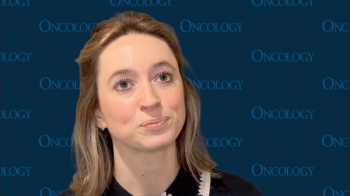
Does Chemotherapy Increase the Risks of Myelodysplastic Syndrome and Acute Myeloid Leukemia?
The study, published in JAMA Oncology, examined whether treatment of 22 solid tumor types was associated with two therapy-related conditions.
Receipt of chemotherapy was associated with a 1.5-fold to more than 10-fold higher risk of developing therapy-related myelodysplastic syndrome (MDS) or acute myeloid leukemia (AML) for 22 types of solid tumors, a large-scale, population-based cohort study
“This has been reported previously that patients can develop therapy-related MDS and AML,”
To quantify the risk of MDS or AML after chemotherapy, study researchers reviewed cancer registry data from the National Cancer Institute’s Surveillance, Epidemiology, and End Results (SEER) Program. The study cohort included adult patients aged 20 to 84 years whose primary solid tumor diagnosis occurred between 2000 and 2013. All included patients lived for at least 1 year without having a second primary tumor develop and received initial chemotherapy. A total of 23 cancer types were included. Because the SEER database lacks treatment details, the SEER-Medicare database was used to gain insights into specific chemotherapeutic agents used.
A total of 1,619 cases of therapy-related MDS or AML were identified among 700,612 patients in the study cohort. Individuals who developed therapy-related MDS or AML also had poorer survival, with 1,270 of 1,619 patients (78.4%) having died and a median overall survival of 7 months.
Receipt of chemotherapy was associated with significantly higher risk of developing MDS or AML for all solid tumors evaluated in the study, except for colon cancer. A more than 10-fold increased risk, which was the highest, was found among patients with bone (standardized incidence ratio [SIR], 39.0; 95% CI, 21.4–65.5), soft tissue (SIR, 10.4; 95% CI, 6.4–15.9), and testis cancers (SIR, 12.3; 95% CI, 7.6–18.8). Cancers with a 5- to 9-fold increased risk included peritoneum, small-cell lung, ovary, fallopian tube, and brain or central nervous system cancers.
For stomach, non–small-cell lung, and female breast cancers, patients who received chemoradiotherapy had significantly higher risk for therapy-related MDS or AML than those who received chemotherapy alone.
The study researchers estimated that in 2018, nearly 360,000 adults with one of the 23 cancers included in this study will have received chemotherapy and lived longer than 1 year. An estimated 73.0% of therapy-related MDS or AML cases (521 of 714) expected to occur within the next 5 years-that is, by 2023-will be linked to chemotherapy.
Patient data from the SEER-Medicare database revealed that among older adults, the use of known leukemogenic agents rose from 57% in 2000–2001 to 81% in 2012–2013. The study researchers cited platinum agents, the use of which rose from 35% to 59% during the same time period, as the driver of the increase. The use of alkylating agents was consistent (approximately 21%), while the use of topoisomerase II inhibitors decreased from 20% to 12%.
“One of the highlights of this [study] was that one of the diseases that we did not see that increased risk was in colon cancer,” Mascarenhas said. Possible explanations for why colon cancer was not associated with an increased risk include the use of oxaliplatin, which is less leukemogenic than other platinum-based agents.
Mascarenhas noted that the message of this study is not to change chemotherapy treatment approaches for patients with solid tumors. Instead, he said, “The message is that this is an issue that needs more investigation.”
“It’s really an important issue because as the therapies for solid malignancies improve outcomes and longevity, we’re going to increasingly see these fatal diseases of the hematopoietic system arise as a direct result of the treatment they received previously,” Mascarenhas said.
Newsletter
Stay up to date on recent advances in the multidisciplinary approach to cancer.





















































































